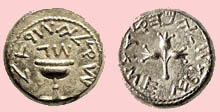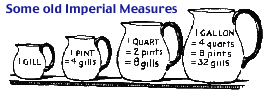 |
||||
|
1
|
Some old weights and measures
The Babylonian unit of weight, the talent, was the weight of a cubic foot of  rain water. rain water.The ancient Hebrew unit, the shekel, was used as a measure of both weight and capacity. In England, the grain was the weight of one barleycorn, three of which laid end-to-end had a length of one inch. In earlier times, many measures of length were derived from the human body: the cubit (the forearm), the foot, the palm, the hand, the fingerbreadth (or digitus), the fathom (outstretched arms), the mile (mille passum = 1000 double paces), the inch (the thumb), the yard (the arm).
|
|||
|
2
|
Old
measures |
|||
|
3
|
||||
|
4
|
||||
|
5
|
||||
|
6
|
||||

